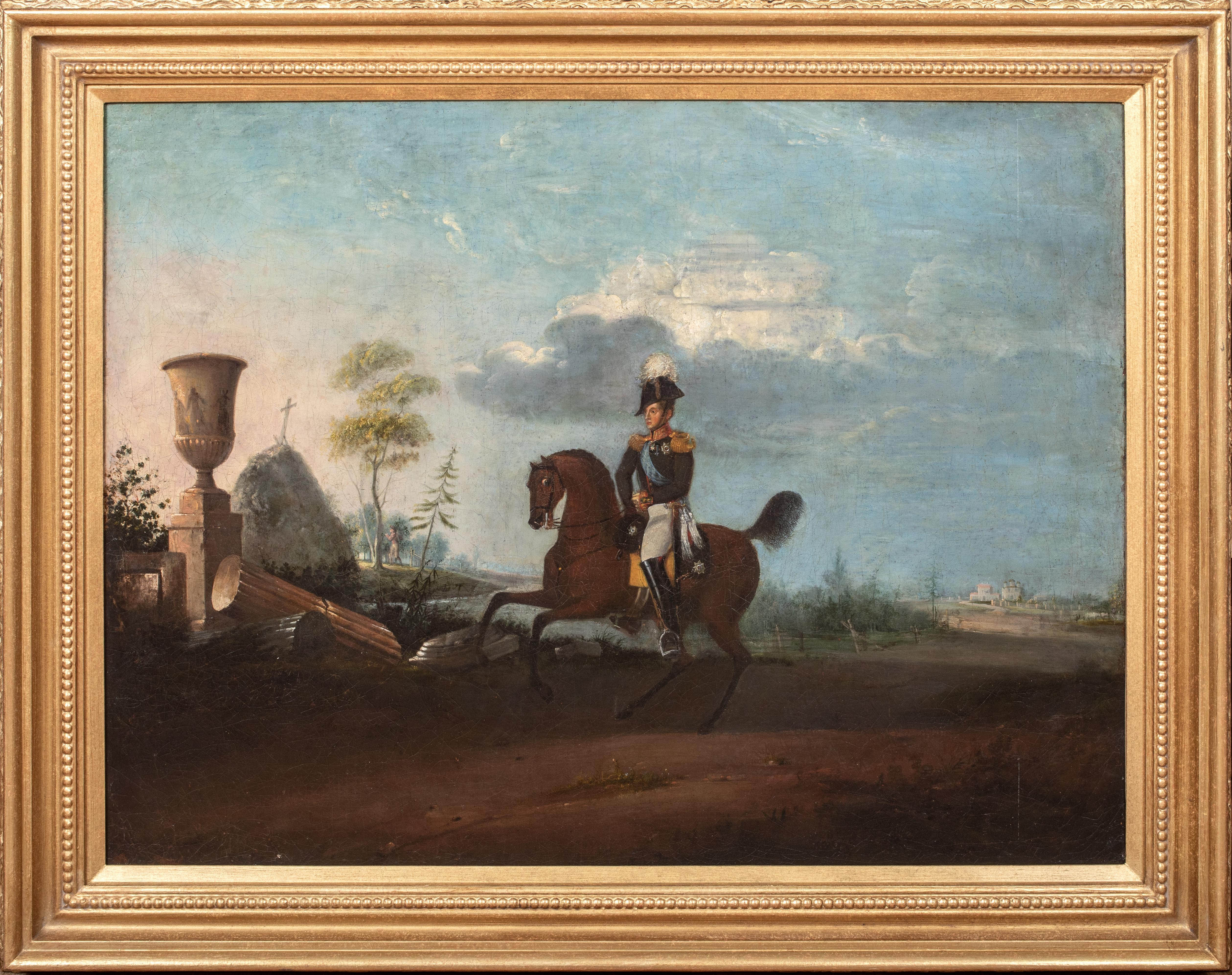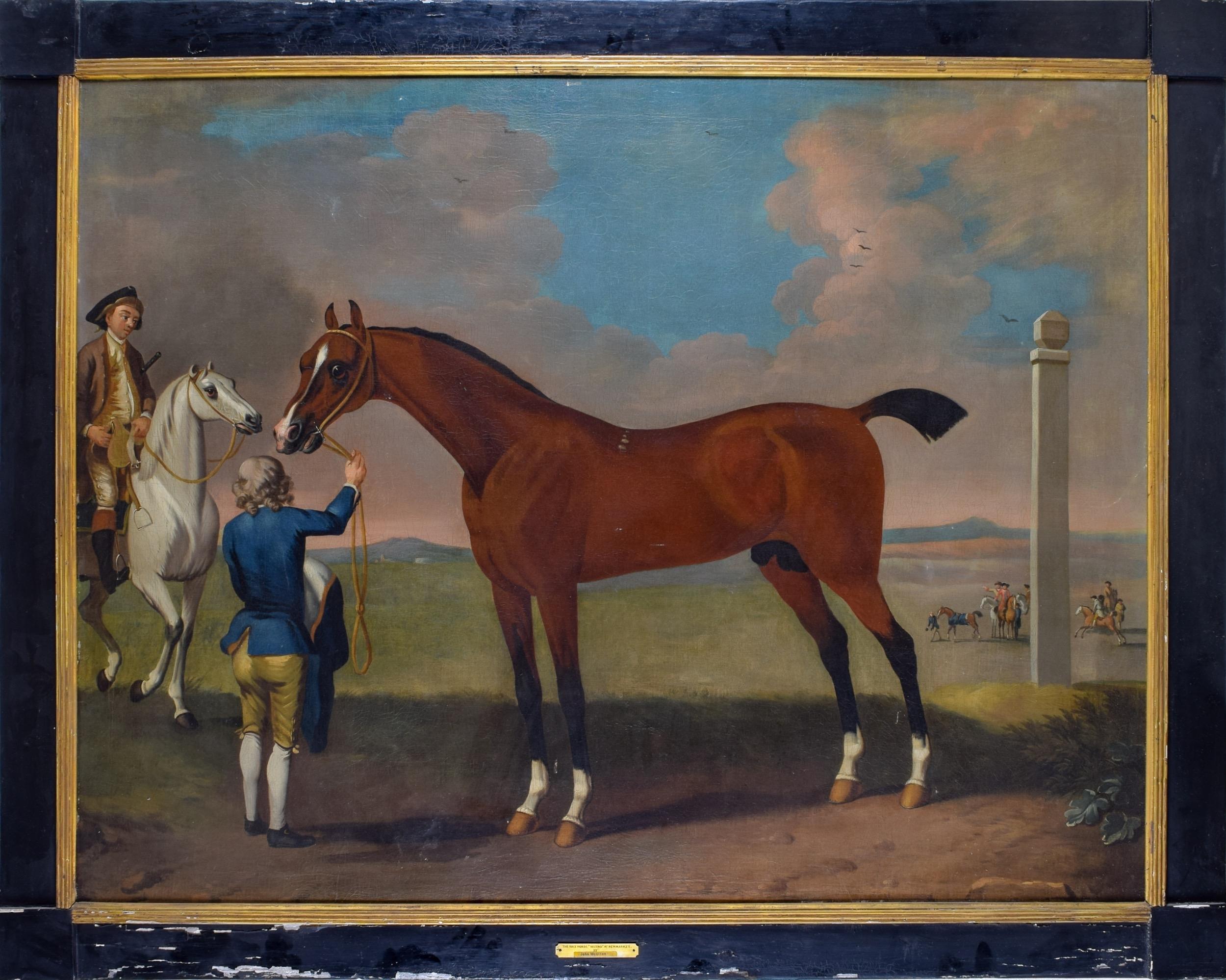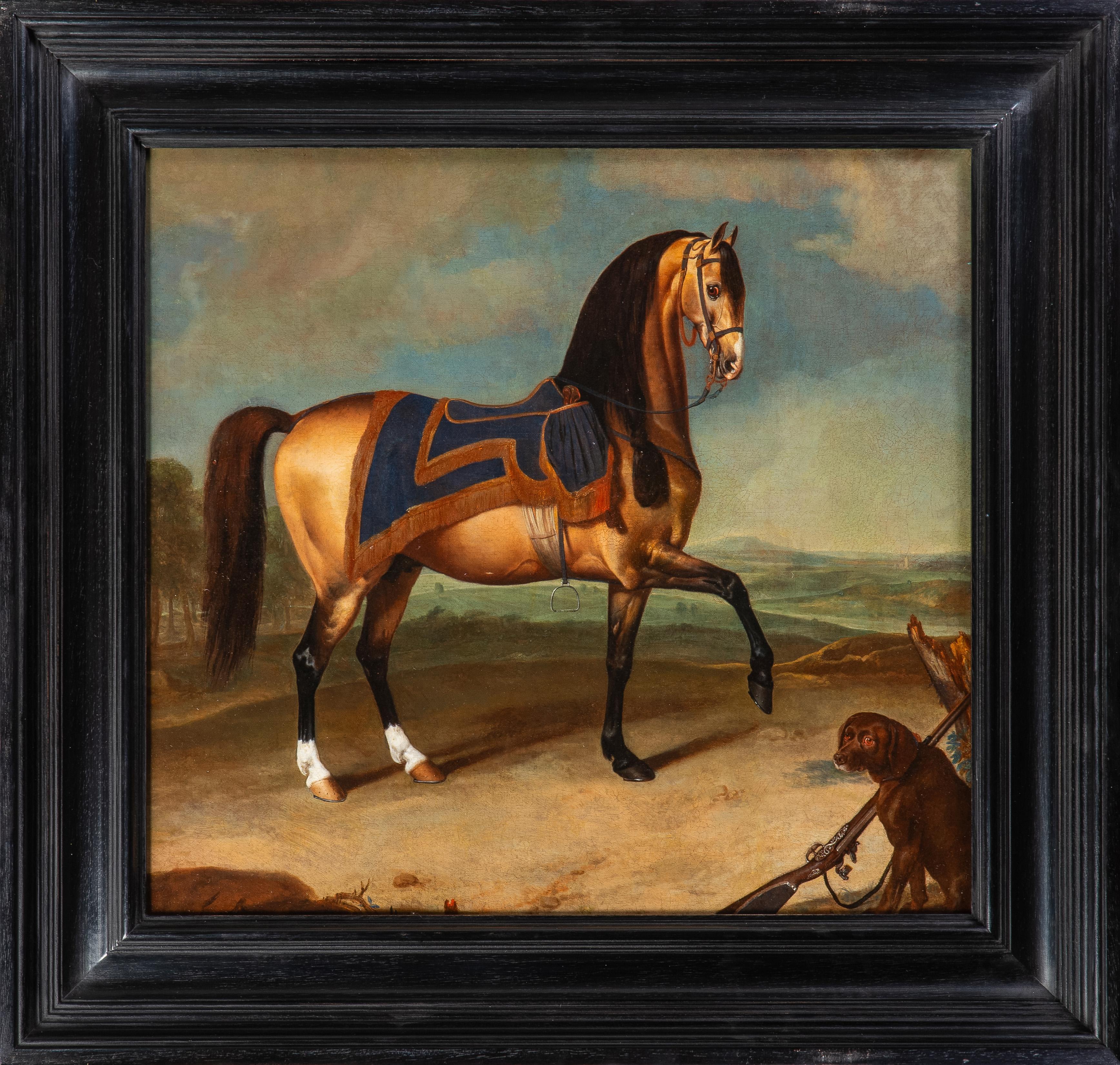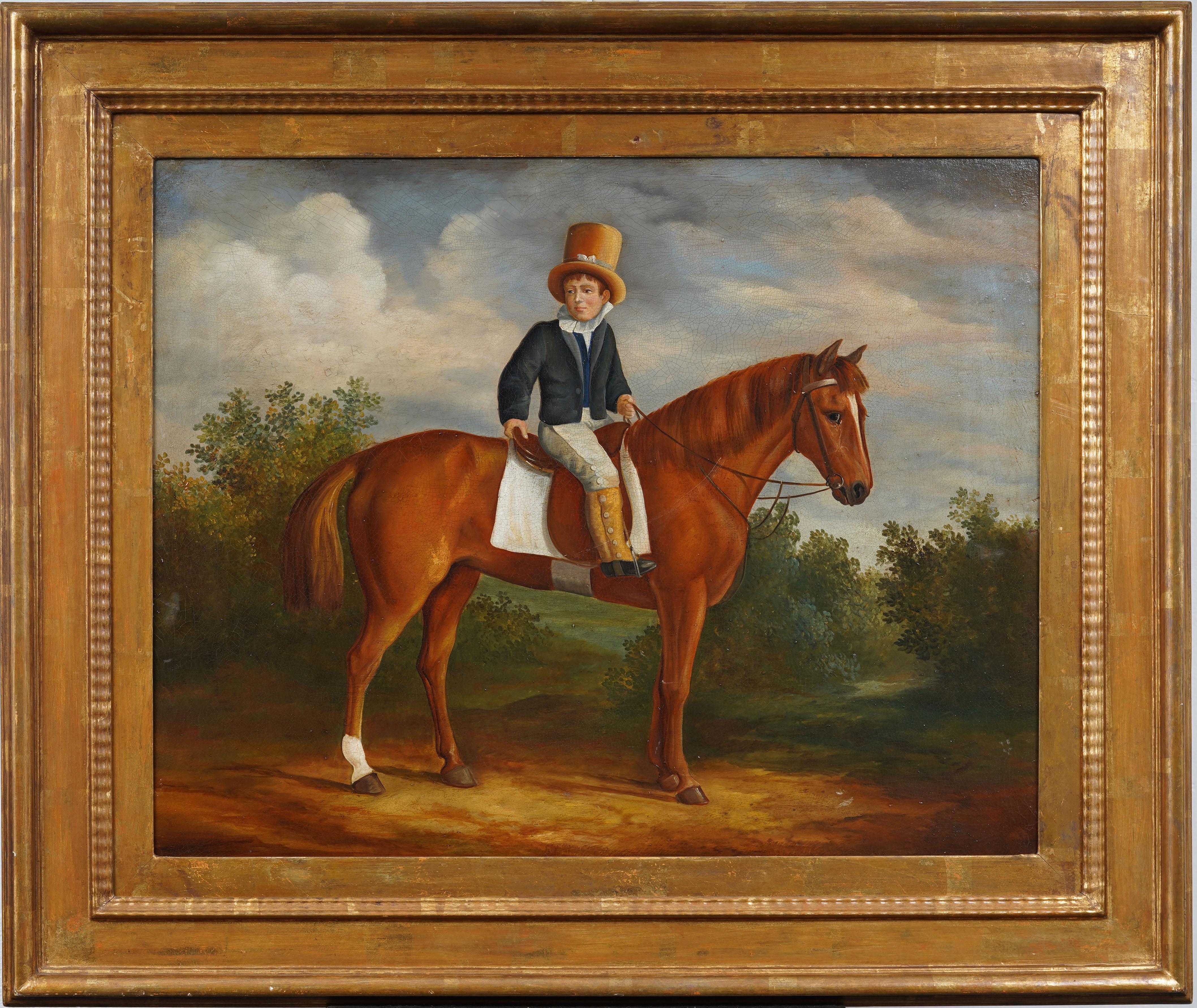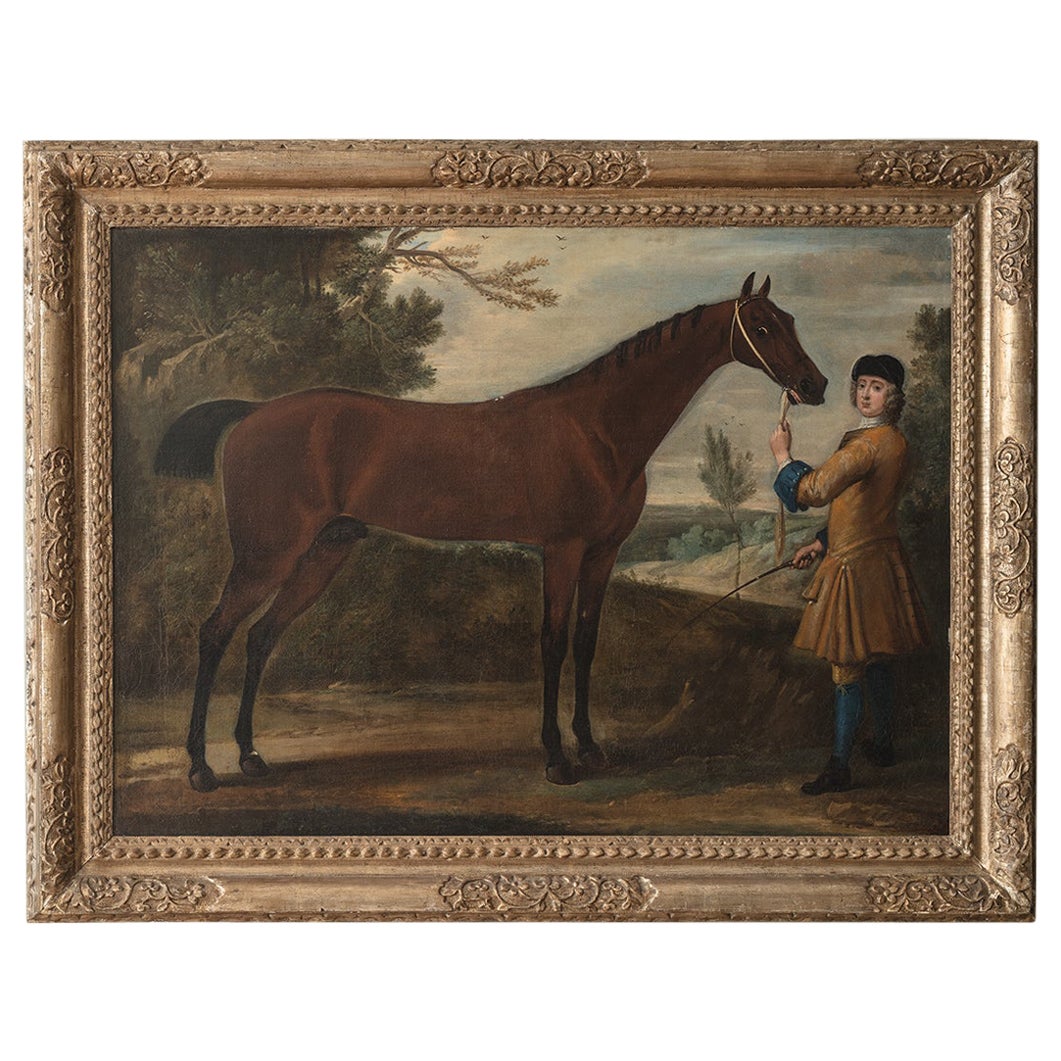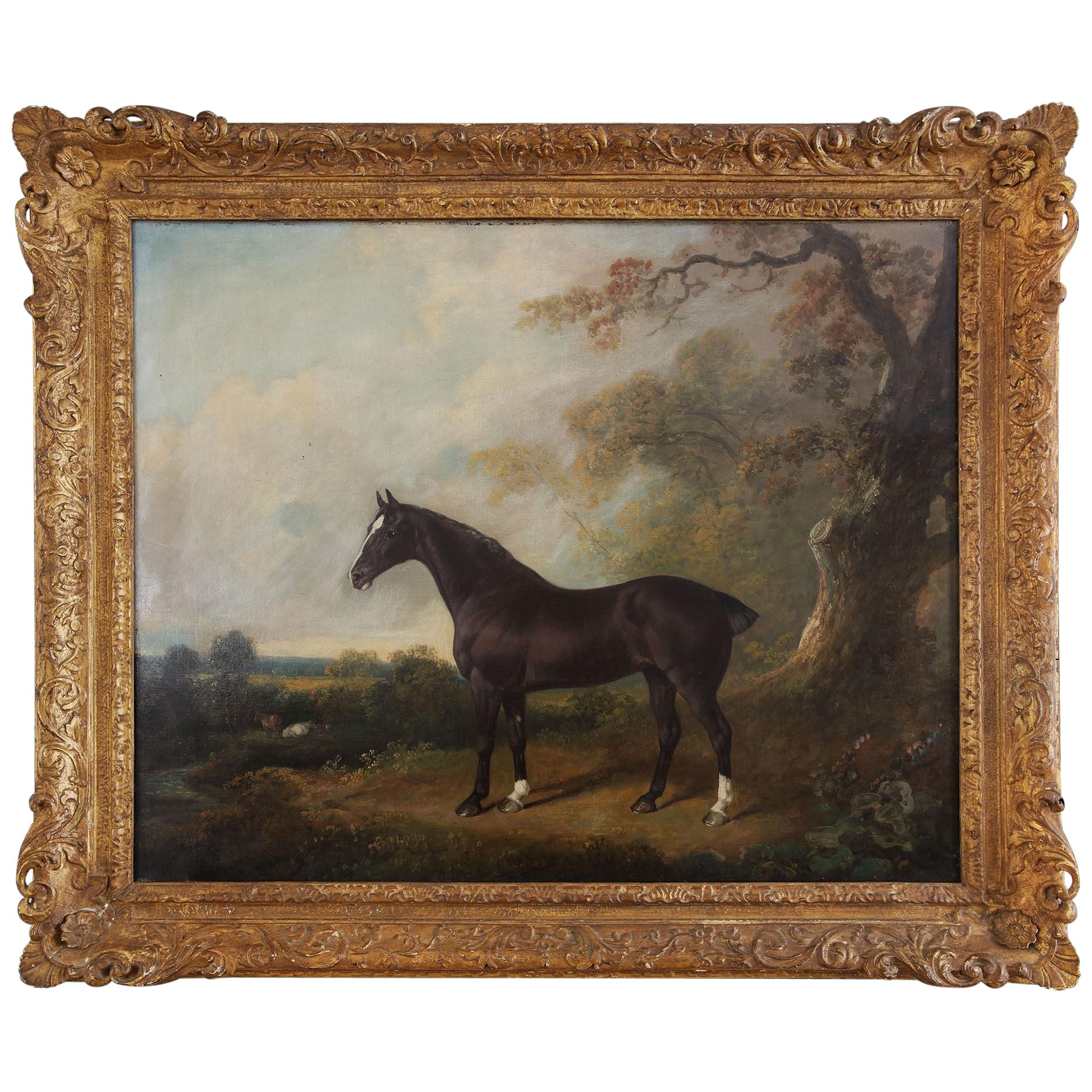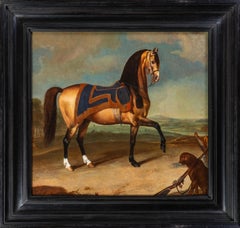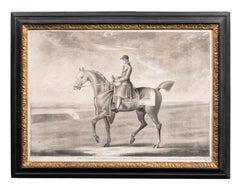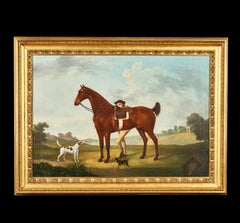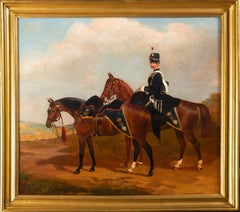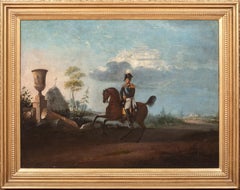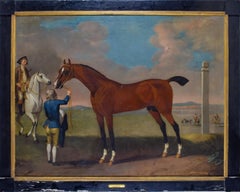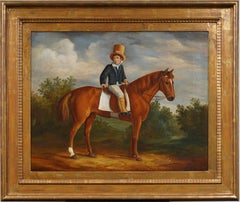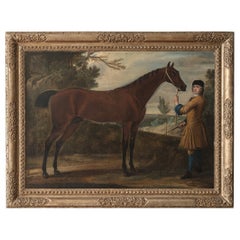Items Similar to An equestrian portrait of Field Marshal Sir John Ligonier, 1st Earl of Ligonier
Want more images or videos?
Request additional images or videos from the seller
1 of 5
David MorierAn equestrian portrait of Field Marshal Sir John Ligonier, 1st Earl of Ligonier
$65,779.13
£48,000
€56,106.71
CA$91,534.10
A$99,840.55
CHF 52,448.79
MX$1,207,866.02
NOK 656,151.64
SEK 619,537.73
DKK 418,797.91
About the Item
David Morier (c.1705–1770 London)
An equestrian portrait of Field Marshal Sir John Ligonier, 1st Earl of Ligonier (1680–1770)
Oil on canvas
Canvas size - 40 x 50 in
Framed size - 48 x 58 in
Provenance
Anonymous sale, London, Sotheby's, 28 November 2002, lot 166, for £43,020;
Private Collection, London.
David Morier’s equestrian portrait of Field Marshal Sir John Ligonier, 1st Earl of Ligonier (1680–1770) is a striking representation of military power and prestige in 18th-century Britain. As a celebrated officer of French Huguenot descent, Ligonier played a vital role in the British Army during the War of the Austrian Succession and the Seven Years’ War, rising to the position of Commander-in-Chief. Morier’s painting not only captures the authority and grandeur of the field marshal but also serves as a visual testament to Britain’s military strength during this period.
In the portrait, Ligonier is depicted on a magnificent black horse, elegantly posed and adorned with gold-accented tack. His striking red coat with intricate gold embroidery and his polished breastplate immediately draw attention, reinforcing his high rank and battlefield experience. His expression is composed and authoritative, a man in complete command of both his steed and the battlefield. The inclusion of an expansive landscape behind him, filled with troops in formation, reinforces his role as a strategist and leader, overseeing the movements of war. The battle scene unfolding in the background is meticulously arranged, with soldiers lined up in neat regiments, capturing the rigid discipline of 18th-century warfare.
The artist, David Morier (c. 1705–1770), was a Swiss-born painter known for his military and equestrian portraits. He was appointed Painter to the Duke of Cumberland, the younger son of King George II, and became well known for his precise and highly detailed depictions of British officers and battle scenes. His works often celebrated military leaders, reinforcing their authority through grand, heroic compositions. Morier had a particular talent for rendering the intricate details of uniforms, weapons, and horses, which made his paintings both historically valuable and visually impressive. In this portrait, his skill is evident in the fine textures of the fabric, the polished shine of the armor, and the muscular realism of the horse, all contributing to an image of unwavering strength and command.
Beyond being a portrait, the painting reflects the broader themes of military propaganda and the glorification of war in the 18th century. Such images served not only as personal tributes to their subjects but also as powerful tools to reinforce the ideals of leadership, discipline, and British military dominance. Ligonier, having fought in major conflicts such as the Battle of Dettingen (1743) and the Battle of Lauffeld (1747), where he was briefly captured, embodied the resilience and tactical brilliance that Britain sought to celebrate. His rise to Commander-in-Chief of the British Army in 1757 solidified his legacy as one of the era’s most respected military figures.
Morier’s painting of Ligonier remains a remarkable example of 18th-century equestrian portraiture, seamlessly blending artistic skill with historical narrative. Through its rich colors, careful composition, and symbolic elements, it immortalizes the achievements of a man who played a significant role in shaping Britain’s military history. The work stands as both a personal homage to Ligonier’s career and a broader representation of the military ideals that defined the British aristocracy of the time.
- Creator:David Morier (1704 - 1770, Swiss)
- Dimensions:Height: 48 in (121.92 cm)Width: 58 in (147.32 cm)
- Medium:
- Movement & Style:
- Period:
- Condition:
- Gallery Location:Stoke, GB
- Reference Number:1stDibs: LU446315748712

About the Seller
5.0
Recognized Seller
These prestigious sellers are industry leaders and represent the highest echelon for item quality and design.
Platinum Seller
Premium sellers with a 4.7+ rating and 24-hour response times
Established in 2009
1stDibs seller since 2016
189 sales on 1stDibs
Typical response time: 1 hour
Associations
LAPADA - The Association of Arts & Antiques DealersInternational Confederation of Art and Antique Dealers' AssociationsThe British Antique Dealers' Association
- ShippingRetrieving quote...Shipping from: Andover, United Kingdom
- Return Policy
Authenticity Guarantee
In the unlikely event there’s an issue with an item’s authenticity, contact us within 1 year for a full refund. DetailsMoney-Back Guarantee
If your item is not as described, is damaged in transit, or does not arrive, contact us within 7 days for a full refund. Details24-Hour Cancellation
You have a 24-hour grace period in which to reconsider your purchase, with no questions asked.Vetted Professional Sellers
Our world-class sellers must adhere to strict standards for service and quality, maintaining the integrity of our listings.Price-Match Guarantee
If you find that a seller listed the same item for a lower price elsewhere, we’ll match it.Trusted Global Delivery
Our best-in-class carrier network provides specialized shipping options worldwide, including custom delivery.More From This Seller
View AllA saddled officer's Arabian horse with a hound and gun, in a landscape
Located in Stoke, Hampshire
Johann Georg de Hamilton (1672-1737)
A saddled officer's Arabian horse with a hound and gun, in a landscape
Oil on canvas
Canvas size - 21 x 23 in
Framed size - 27 x 29 in
Provenanc...
Category
18th Century Old Masters Animal Paintings
Materials
Oil
$32,889 Sale Price
25% Off
'Star', A running horse belonging to His Grace the Duke of Bridgewater
By James Seymour
Located in Stoke, Hampshire
James Seymour (1702-1752)
'Star', A running horse belonging to His Grace the Duke of Bridgewater
Mezzotint by R. Houston
Image size 10 x 14 in
Framed size 13 x 17 in
James Seymour w...
Category
18th Century Old Masters Animal Paintings
Materials
Mezzotint
A groom with a saddled bay hunter and dogs in an extensive landscape
Located in Stoke, Hampshire
Thomas Stringer (1722-1790)
A groom with a saddled bay hunter and dogs, in an extensive landscape
Dated 1754 lower left
Oil on canvas
Unframed size 25 x 36 in
Framed size 31 x 42 in
...
Category
18th Century Old Masters Landscape Paintings
Materials
Oil
$13,978 Sale Price
20% Off
The 15th (The King's) Hussars: two chargers, one with an officer up, in a landsc
By Henry Calvert
Located in Stoke, Hampshire
Henry Calvert (1798-1869)
The 15th (The King's) Hussars: two chargers, one with an officer up, in a landscape, a camp beyond
Oil on canvas
Canvas Size - 32 x 36 in
Framed Size - 37 x...
Category
19th Century Victorian Figurative Paintings
Materials
Oil
$10,908 Sale Price
20% Off
General Sir W.R. Mansfield's Arabian charger, held by a groom
Located in Stoke, Hampshire
Edwin Loder of Bath (1827-1885)
General Sir W.R. Mansfield's Arabian charger, held by a groom
signed, inscribed and dated 'E. Loder/ Bath/ 1868' (lower
right)
Oil on canvas
Painting ...
Category
19th Century Victorian Animal Paintings
Materials
Oil
The Duke of Wellington's 'Copenhagen', ridden at the Battle of Waterloo
By William Webb
Located in Stoke, Hampshire
William Webb (1780-1846)
The Duke of Wellington's 'Copenhagen', ridden at Waterloo, Sir John Waters' 'Bitter', the Duke of Wellington's chestnut mare, the Duke of Wellington's white ...
Category
19th Century Victorian Animal Paintings
Materials
Oil
You May Also Like
Portrait Of Emperor Nicholas I Of Russia (1796-1855) On Horseback, 19th Century
Located in Blackwater, GB
Portrait Of Emperor Nicholas I Of Russia (1796-1855) On Horseback, 19th Century
circle of Heinrich Muller (1781-1851)
Large 19th Century portrait of Nicholas I, Emperor of Russia o...
Category
19th Century Portrait Paintings
Materials
Canvas, Oil
Portrait of Flying Childers Racehorse Oil on Canvas British 18th Century
Located in London, GB
Thomas Spencer (British, active c. 1740-1756)
A Portrait of Flying Childers
Oil on canvas
With an incorrect label "a racehorse second at new
market by John Wotton”
With an indistinct...
Category
18th Century English School Animal Paintings
Materials
Oil
Antique English Large Horse Portrait And Landscape Framed Original Oil Painting
Located in Buffalo, NY
Antique English horse portrait landscape attributed to Henry Barraud (1811 - 1874). Oil on canvas. Framed. Measuring: 34 by 40 inches overall, and 24 by 30 painting alone. In excel...
Category
1870s Realist Animal Paintings
Materials
Canvas, Oil
‘Scamp’, the Duke of Devonshire’s Racehorse Painting, 18th Century
Located in London, GB
An 18th Century Painting of ‘Scamp’, the Duke of Devonshire’s Racehorse; signed John Wootton
A charming equestrian painting, depicting the third Duke of Devonshire’s beloved racehor...
Category
Antique 18th Century Paintings
Oil Painting of a Horse Standing Proud in Woodland, signed by the Royal Artist
Located in Oxfordshire, United Kingdom
Fine Art, Charles Henry Scwanfelder (1774-1837). Signed C H Schwanfelder Pinx and dated 1825.
An exceptional portrait of a horse standing proud in woodland, in front of a tree-lined vista incorporating cows residing by a stream.
Charles born in England, the son of a German decorative painter started his career helping his father painting clock faces and snuff boxes and became renowned in his own right for his animal paintings, later being appointed by George III and George IV. Exhibiting at the Royal Academy between 1809 and 1814. His works can be found at - Temple Newsam House, Lotherton Hall, York Museum trust, National Trust, Florence Court, Leeds City Museum and Galleries, The Ferens Art Gallery and Newstead Abbey...
Category
Antique 18th Century English George III Paintings
Materials
Paint
$21,707 Sale Price
34% Off
18th Century sporting horse portrait oil painting of a race horse and groom
By Francis Sartorius
Located in Nr Broadway, Worcestershire
Francis Sartorius
British, (1734-1804)
Bay Hunter & Groom
Oil on canvas, signed
Image size: 24.25 inches x 29.25 inches
Size including frame: 32 inches x 37 inches
A wonderful spor...
Category
18th Century Old Masters Animal Paintings
Materials
Canvas, Oil
More Ways To Browse
Earl Of
John Fields
Antique Gold Embroidery
Antique Military Painting
Antique Equestrian Painting
Antique Breastplate
Chief Painting
French Huguenot
King George Ii
Duke Of Cumberland
The Black Earl
Portrait Of A Knight
Portrait Painting Of Princess
Reuben Tam
Shotgun Shell Art
The Cheshire Cat
Thomas Lord
Abraham Lincoln Painting
